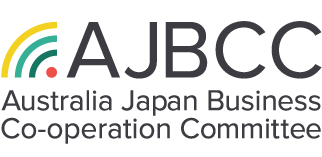26 Jun Japan looks to: Artificial Intelligence (AI)
It might come as a surprise to hear that Japan is lagging behind in terms of the use of Artificial Intelligence systems. However, this is the view according to a report by the Japanese Government’s Strategic Council for AI Technologies. AI can broadly be defined as systems and software that businesses use to gather and interpret all types of data such as customer data, manufacturing data based on sensors etc. AI is seen as a growth area because it can provide companies with a number of benefits such as real-time analysis or improvements in productivity.
So what are the impediments that Japan is facing? Three have been identified. They are:
- Tardiness in digitization
- Comparatively low levels of IT (information technology) investment
- Shortage of personnel
The first is the problem of digitization. Simply put, Japan historically has relied on a paper based data recording process rather than capturing data digitally (the process called “digitization”). Moreover, because there is a lower incidence of digitization in Japan, this has meant that Japanese companies have been slower to utilize sophisticated data analysis tools. A survey conducted by Japan’s Ministry of Internal Affairs and Communications comparing US and Japanese companies’ use of industry specific data revealed an asymmetry between the two countries.[Related report here – Japanese only] Approximately 40% of US companies were actively incorporating a range of datasets related to their business, compared to only 16% for their Japanese counterparts. Furthermore, whereas 10% of American companies currently do not have any plans to incorporate this type of information analysis in the future, the percentage of Japanese companies is twice that. The second impediment is the low level of investment in IT infrastructure by Japanese companies compared to their US counterparts. According to a study by Japan’s Ministry of Economy Trade and Infrastructure (METI), business innovation in the US is fueling investment in IT, whereas IT investment in Japan tends to be focused on cost cutting and increased productivity. A third and related challenge according to the Artificial Intelligence Technology Strategy report is the shortage of personnel in Japan with expertise in the area of AI.
To mitigate these problems the Japanese Government, like a number of countries around the world, has developed an overarching policy to navigate through the next industrial revolution. In Japan’s case it is called Society 5.0. The policy goal is to build a new economy around the use of AI in society. Methods for this include greater use of robotics and increased data collection through the connection of devices and machines to the internet – the Internet of Things (IoT) – thereby increasing the integration of the internet into daily life.
To achieve the targets under Society 5.0, METI has set aside ¥40 billion in 2018-19 to:
- fund a startup incubator (tentatively called Startup Japan)
- promote R&D in robotics and AI (especially focused on health, medicine and care services)
- conduct studies into IoT infrastructure (including smart homes and water infrastructure)
- generally help companies improve their digitization of data (including an incentive based award system)
Apart from Government initiatives, Japan’s version of the Business Council of Australia (BCA), the Japan Business Federation (Keidanren), also recently introduced a high level plan to help Japanese industry achieve Society 5.0. The plan concentrates on creating an ecosystem that is receptive to open innovation and comprises recognition of its three components – companies, universities and venture capitalists. In particular, the Keidanren suggests the linkages between these three need to be made more seamless. It outlines the expectations required by each of these groups in achieving the realization of Society 5.0.
So, while Japan as a market opportunity may have initially been ruled out because of a common perception of its technological prowess, Australian companies and startups might like to revisit the market in light of the Japanese Government’s mitigation strategy and the objective of Society 5.0.



